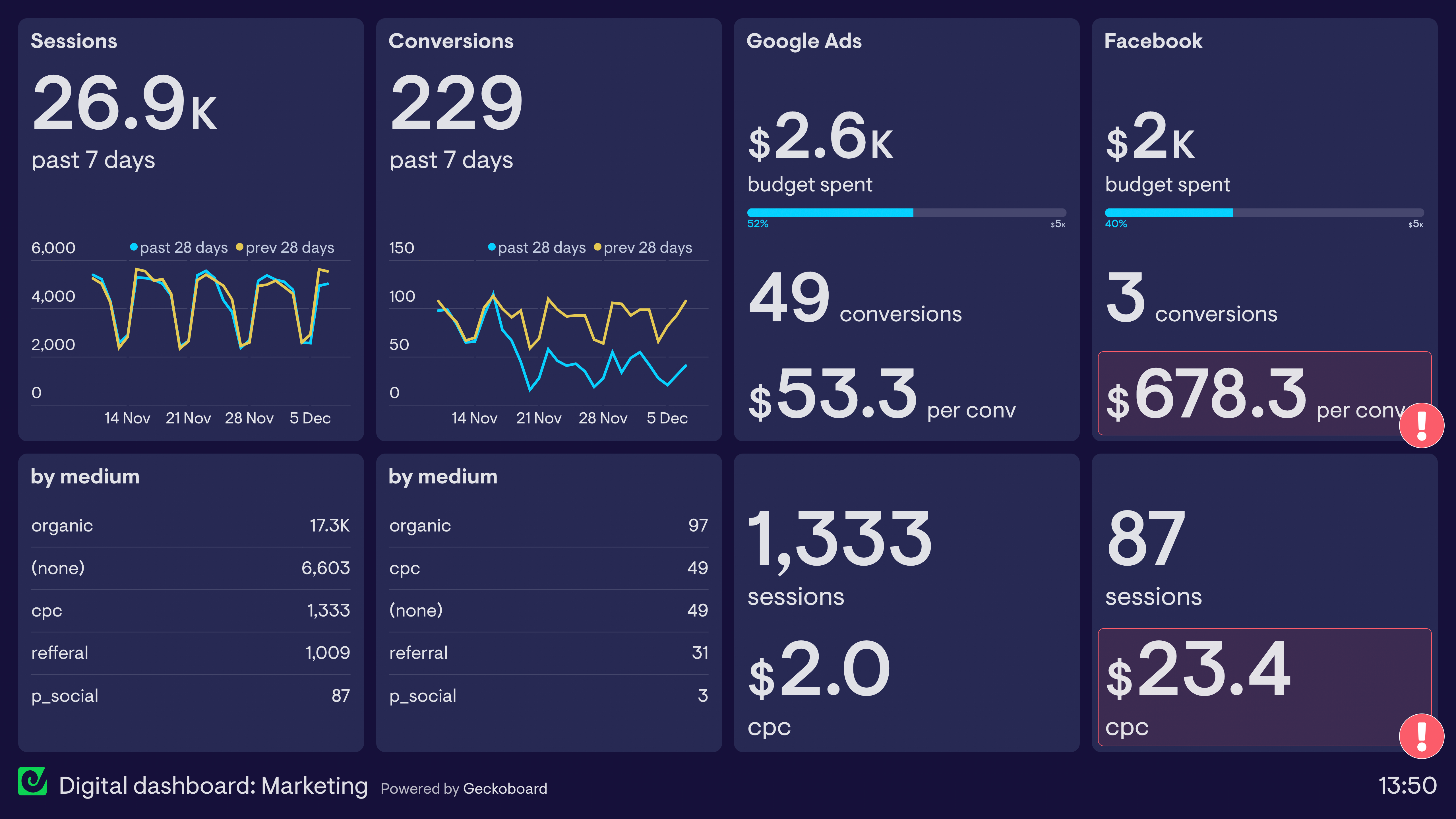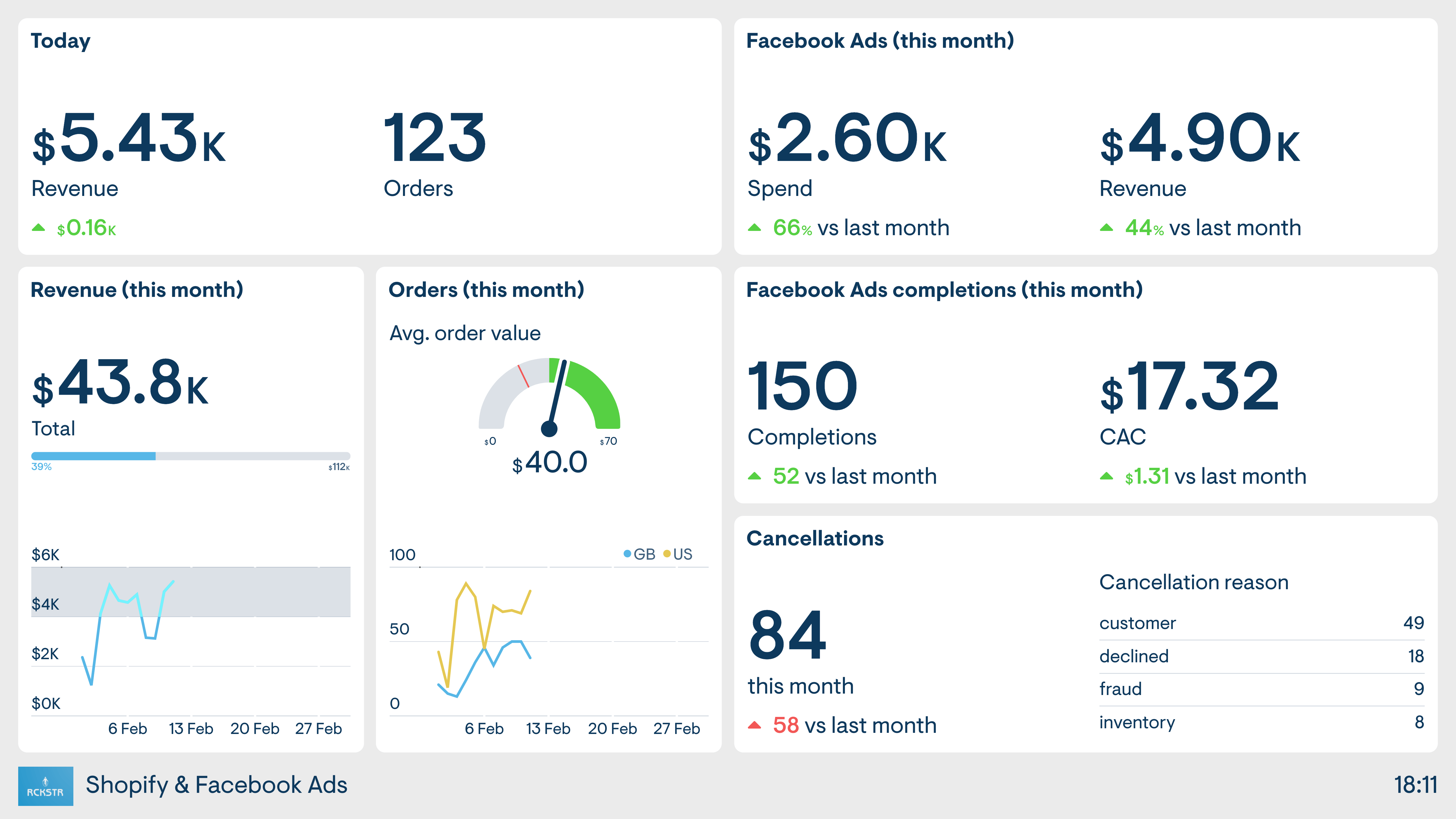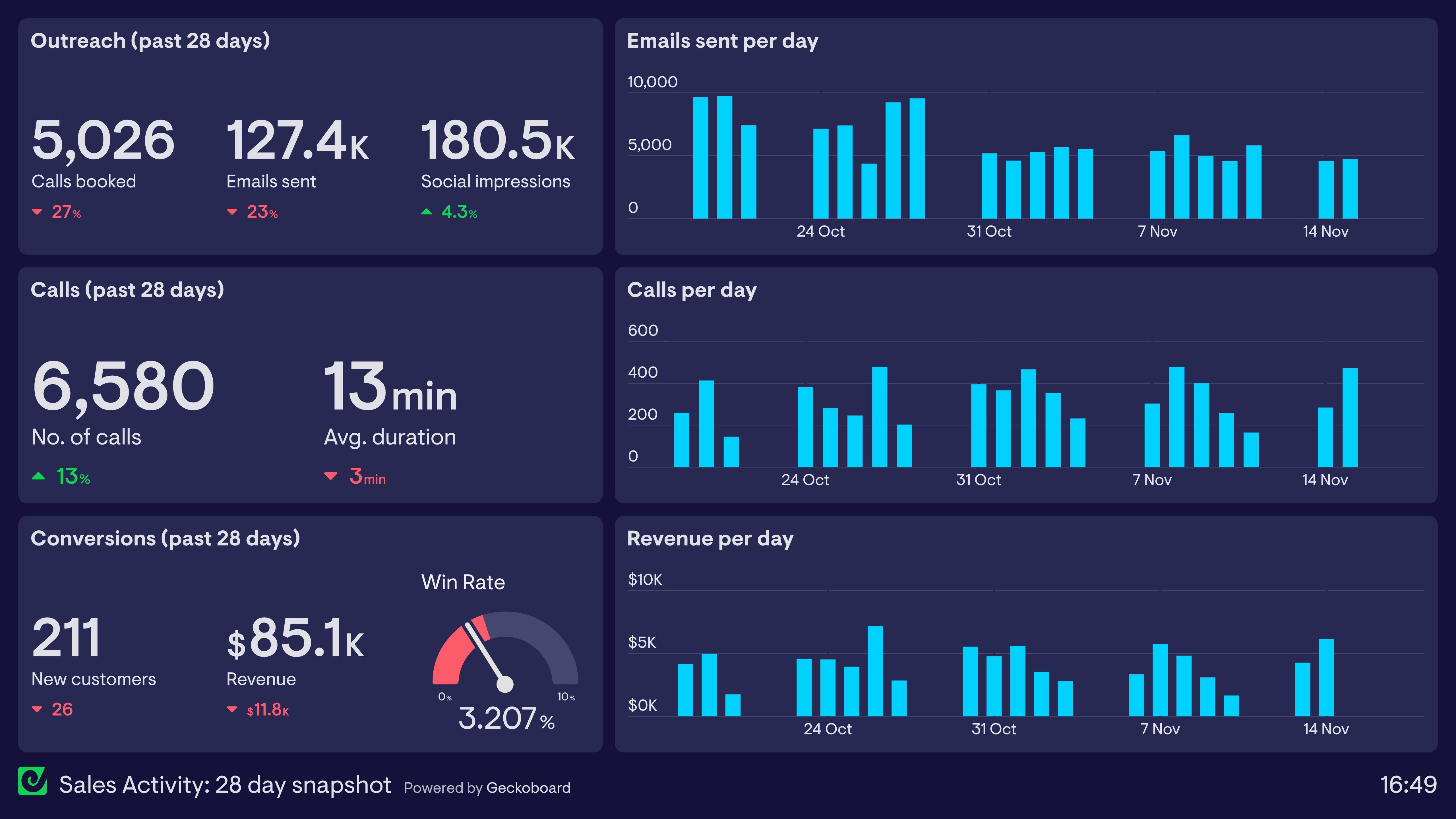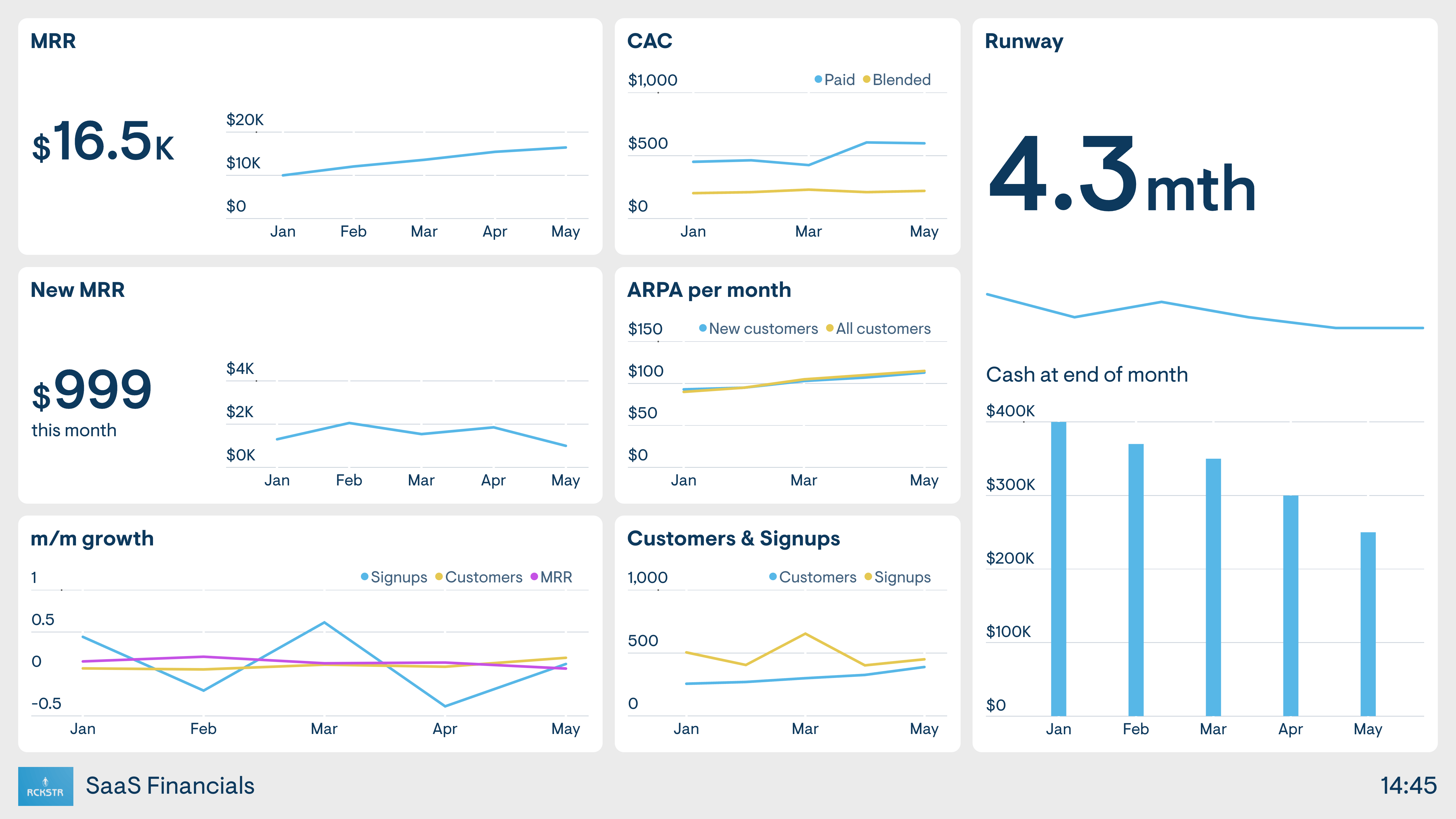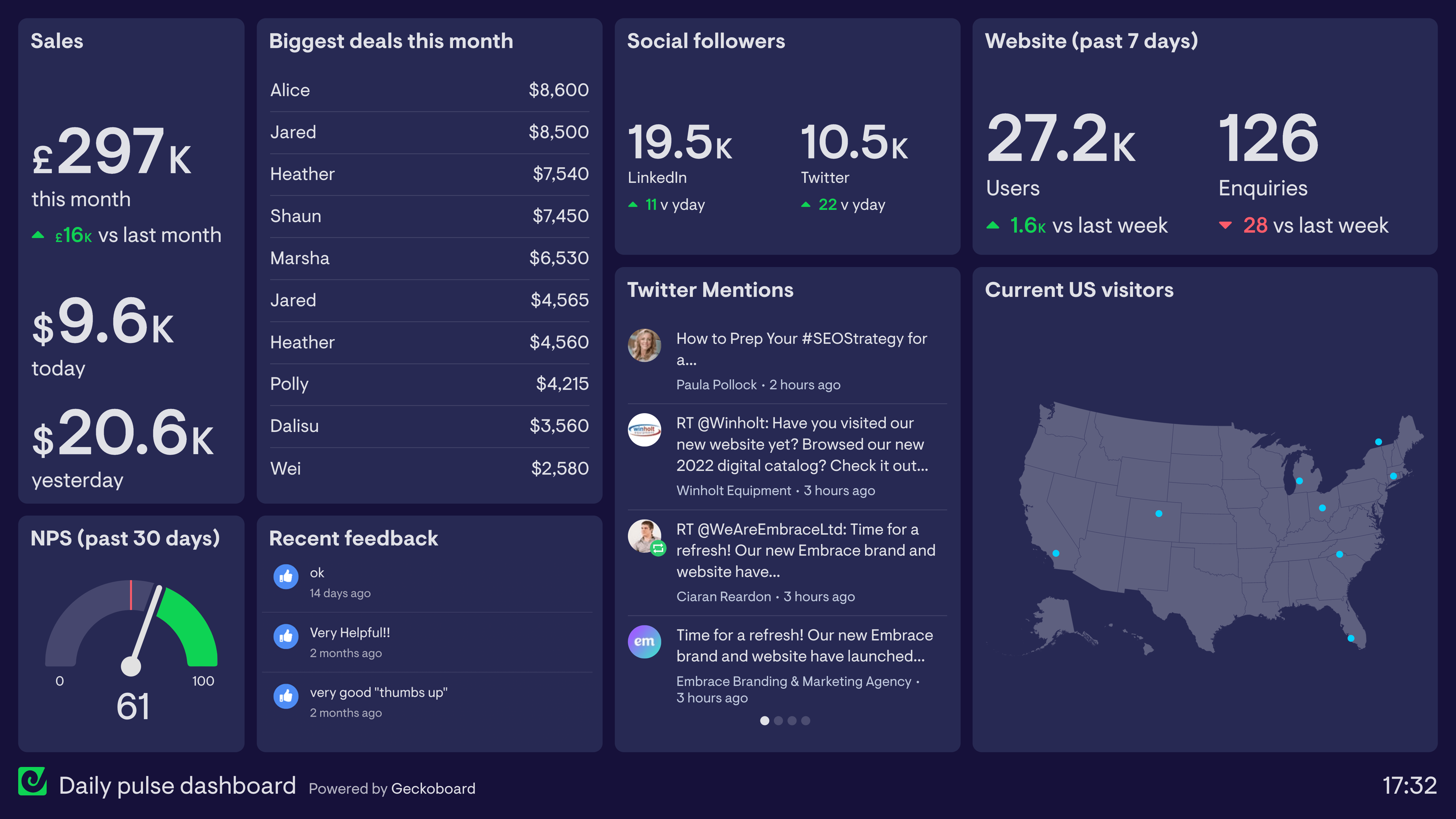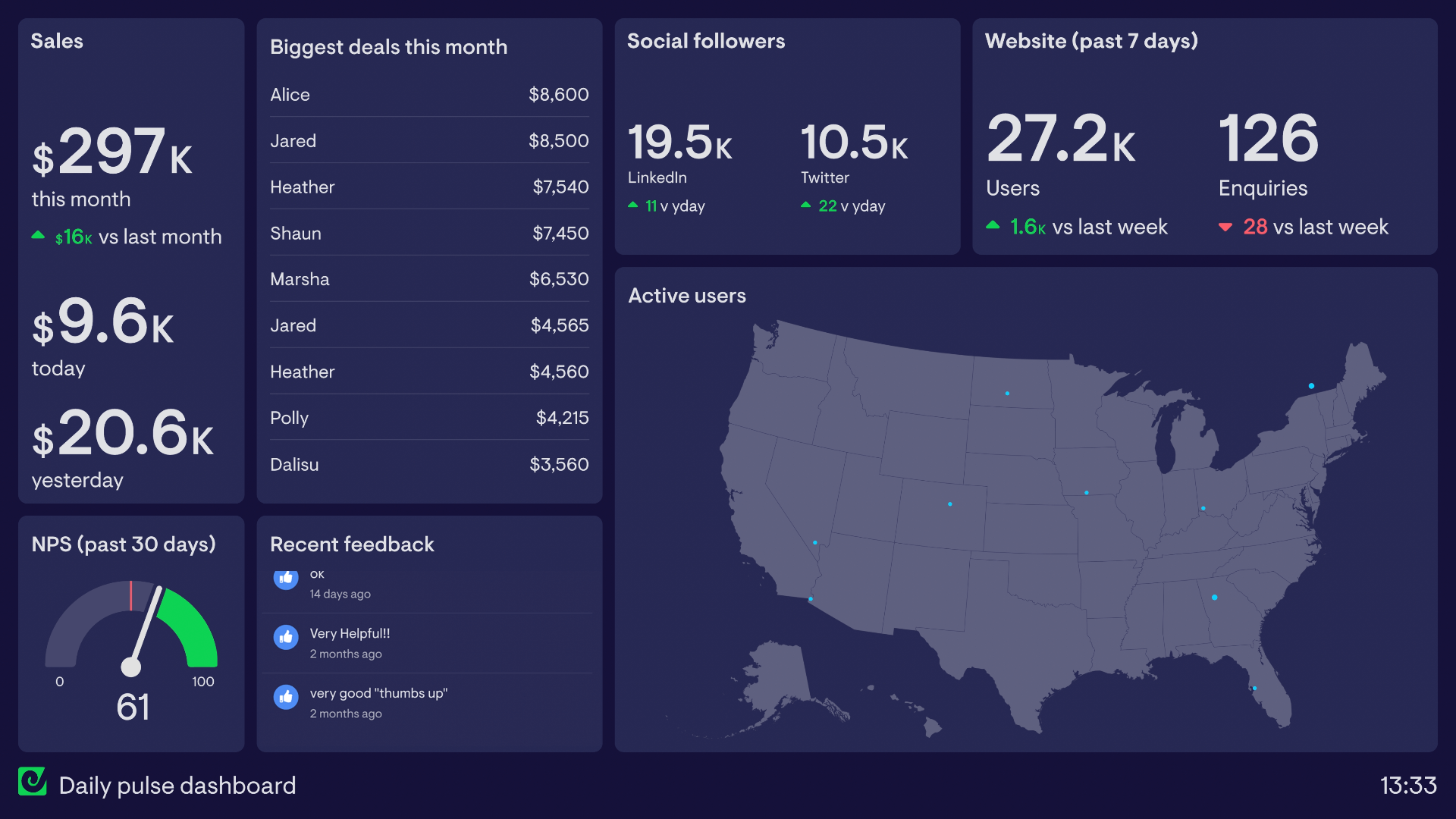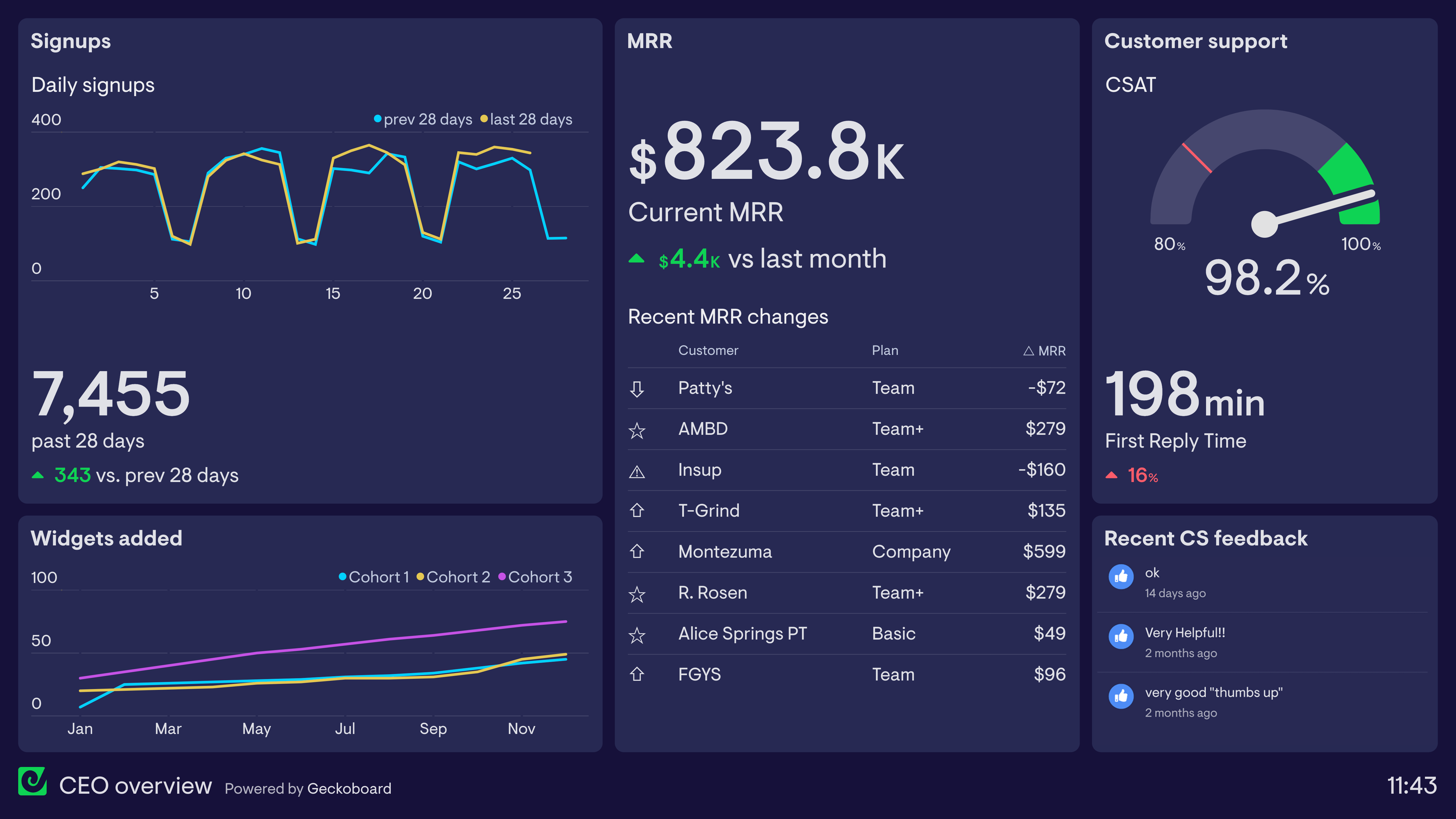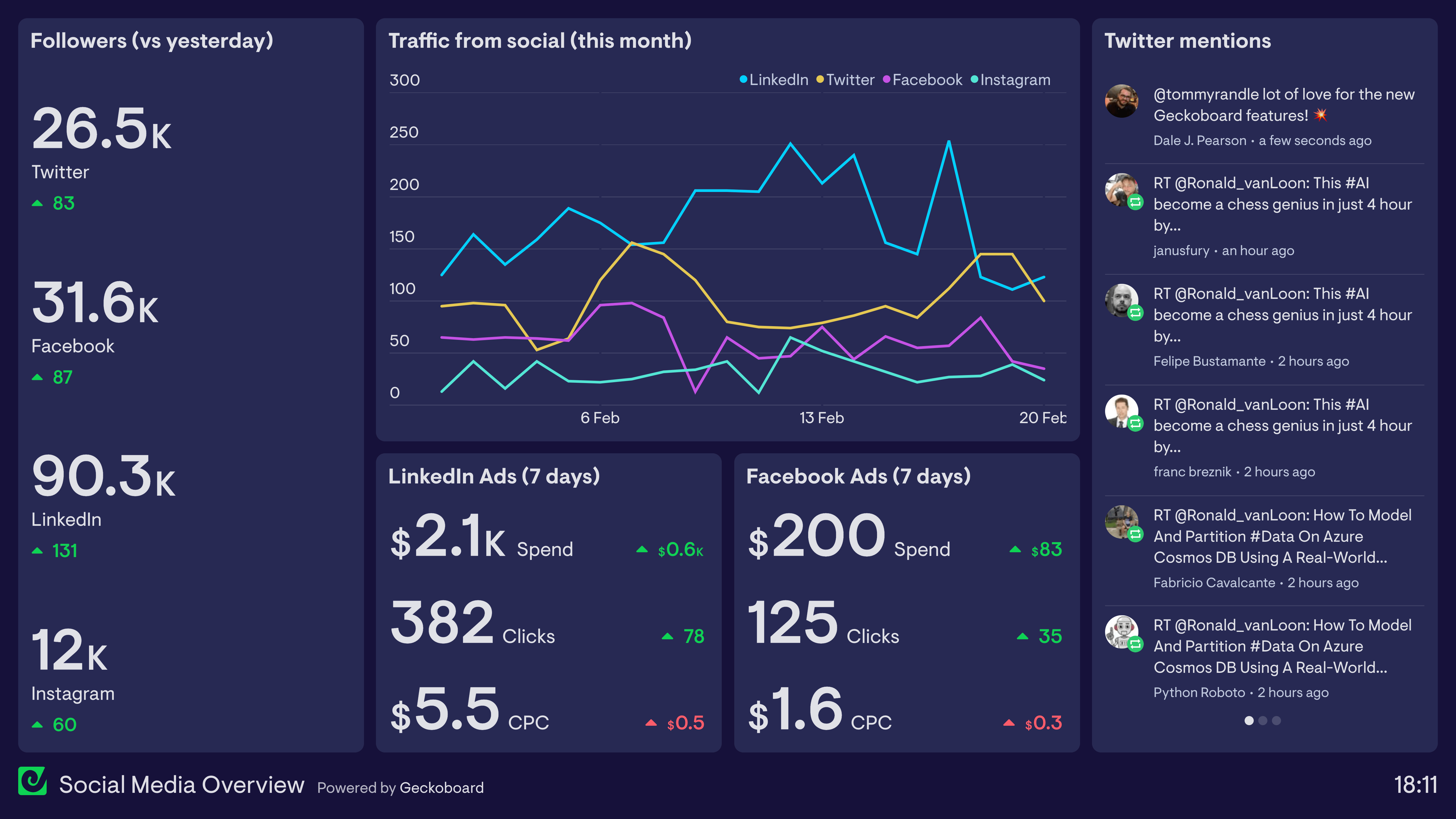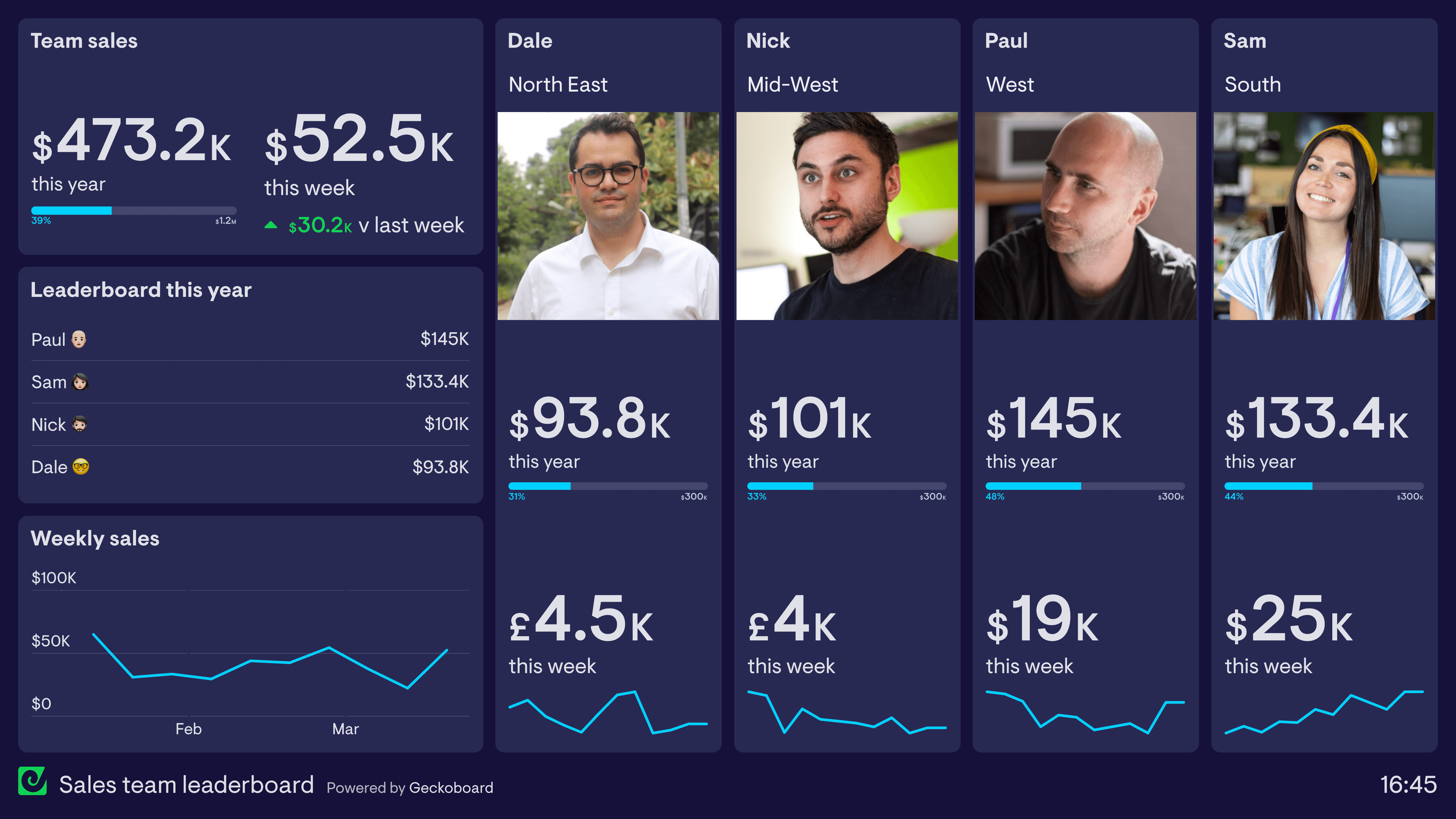What is a digital dashboard?
Digital dashboards are used by businesses to visualize their KPIs in an easy-to-digest format. They reduce the need for teams to log into different platforms, create new reports or run data analysis – each time they simply want to check their key metrics.
Digital dashboards are always used in conjunction with one or more data sets. Sometimes dashboards present data that has been structured using a BI Tool, but this is not always the case. Geckoboard dashboards, for example, integrate directly with databases, spreadsheets, and many of the tools businesses already use.
Digital dashboards are powerful because they cause teams and organizations to become more aware of data they already have. They create a constant feedback loop: increased awareness of data informs decision making; and the effects of decision-making can be seen on the dashboard. And so on.
A digital dashboard’s design and accessibility, therefore, is essential to its success. It should be able to be understood by its users quickly and at a glance, without the need for any action or further explanation. There should also be minimal effort needed to access the dashboard in the first place. This is why many digital dashboards are displayed in office spaces on a TV. When a dashboard is highly visible, checking it becomes as regular as checking the time.
Examples of digital dashboards
Marketing dashboard
Live dashboards are popular with marketing teams who monitor Key Performance Indicators held in multiple data sources. This dashboard visualizes live data from Google Analytics, Facebook and Google Ads. Using the dashboard, the Marketing team can monitor a variety of important metrics related to their digital marketing, website performance and digital advertising campaigns.
On the left half of the dashboard, the team is tracking the number of sessions to their website, as well as the number of conversions that have taken place. A conversion in this case represents a new paying subscriber. From the data visualizations, we can see that over the past month, conversions have dropped off, but overall sessions have stayed the same. This indicates a decrease in conversion rates, which the team will want to investigate further.
On the right hand side, the team is also tracking two digital advertising channels, Google Ads and Facebook. Here they can monitor the overall budget utilization for the month, ensuring they don’t overspend (or underspend). We can also see performance data related to their current campaigns. Facebook Ads have not driven many sessions or new customers resulting in a higher cost per conversion and cost per click. This has triggered red status indicators, alerting the team to the issue.
Focus area
Digital marketing and campaigns
Who looks at it?
Digital Marketing Manager, Marketing team
How often?
Every day
- Google AnalyticsFacebook AdsGoogle AdsSpreadsheets
Ecommerce dashboard
This dashboard is similar to the previous example in that it tracks the success of an online business. However, the difference here is that the business is an ecommerce business and many of the metrics it’s visualizing are pulled directly from Shopify, where it hosts its online store.
This allows the user to track important ecommerce metrics like Revenue, Orders, Order Value and Cancellations, alongside digital advertising KPIs taken from Facebook Ads. Without the dashboard, anyone interested in these metrics would need to log into both platforms and query the data they were looking for. Often, these manual steps create friction resulting in KPIs going unseen.
Focus area
Shopify performance
Who looks at it?
Store owner, Marketing team
How often?
Several times a day
- ShopifyFacebook AdsGoogle Analytics
Sales dashboard
Dashboards are popular with Sales teams who need to keep track of large quantities of data that can quickly change. They are particularly helpful for Sales teams who are working towards a shared goal, helping the whole team understand overall performance so they can stay on track.
This dashboard example is taken from a Sales team who monitor sales activity – outreach emails, calls and the ultimate goal, new business. Here, the team leader can gauge the quantity and quality of the overall sales activity taking place. If the team starts to fall behind, she can examine workload and priorities, and support the team to manage their deliverables.
Focus area
Sales activity
Who looks at it?
Sales Director, Sales team
How often?
Every day
- SalesforceZendesk SellSQL DatabaseHubSpot
Finance dashboard
Financial reporting and analysis form a large part of any finance team’s day-to-day responsibilities. However, when it comes to communicating high-level financial information to the rest of the organization, it can be challenging to present this data in an easily digestible way.
This dashboard visualizes the company’s most important financial KPIs in a way where the rest of the organization can build up a familiarity and understanding of the company’s financial health. By regularly seeing the company finances, they become more generally aware of how and when they change. This leads to a much more nuanced understanding of company finances at every level of the business.
Focus area
Financial health and performance
Who looks at it?
CEO, Finance Director, whole company
How often?
Several times a month
- BaremetricsQuickBooks OnlineSpreadsheetsSQL Database
Company dashboard
This digital dashboard is designed to be used by the whole company and is displayed on a large TV in the office where everyone can see it. It tracks important metrics from different areas of the business including sales, customer support and marketing. It also includes real time customer feedback and social media mentions.
Dashboards like these can help to create a sense of common purpose within a company. They also create the watercooler effect, where team members spot new developments and discuss them, informally. This can spark people’s curiosity and promote a more data-oriented culture.
Focus area
Company overview
Who looks at it?
Everyone
How often?
Every day
- SalesforceZendesk SupportGoogle Analytics
